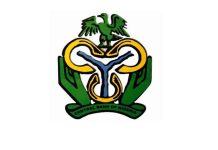Despite Significant Inflows From Open Market Operation (Omo) Bill Repayments And Cash Reserve Requirement (Crr) Refunds, Interbank Lending Rates Surged On Tuesday, Driven By Funding Pressures In Nigeria’s Financial System.
The liquidity level in the banking system saw a 67% boost, rising from ₦476 billion to ₦797.66 billion following an OMO bill repayment of ₦164.68 billion, according to TrustBanc Financial Group. Additionally, inflows of about ₦300 billion, including CRR refunds, further bolstered liquidity.
AIICO Capital Limited noted that while system liquidity was higher, the Central Bank of Nigeria’s (CBN) latest OMO auction and other maturing instruments continued to exert pressure on the financial system. Borrowing from the CBN’s Standing Lending Facility has also declined, suggesting an overall improvement in liquidity among local deposit money banks.
Despite this, interbank rates increased sharply, with the overnight policy rate (OPR) rising by 1.40% to 27.90% and the overnight rate (O/N) climbing 1.60% to 28.60%, as reported by the FMDQ platform. The Nigerian Interbank Offered Rate (NIBOR) also rose across all maturities, indicating tightness in liquidity conditions despite the influx of funds.
Analysts suggest that while the system’s liquidity balance appears sufficient to meet funding needs, cash-rich banks are leveraging market conditions to secure higher yields on surplus funds. However, liquidity shortfalls remain a challenge for some institutions.
The continued rise in interbank rates signals persistent funding pressures, even amidst robust liquidity inflows, highlighting the complex dynamics of Nigeria’s banking system. Financial market watchers anticipate further rate volatility as the CBN implements additional monetary policy measures.













